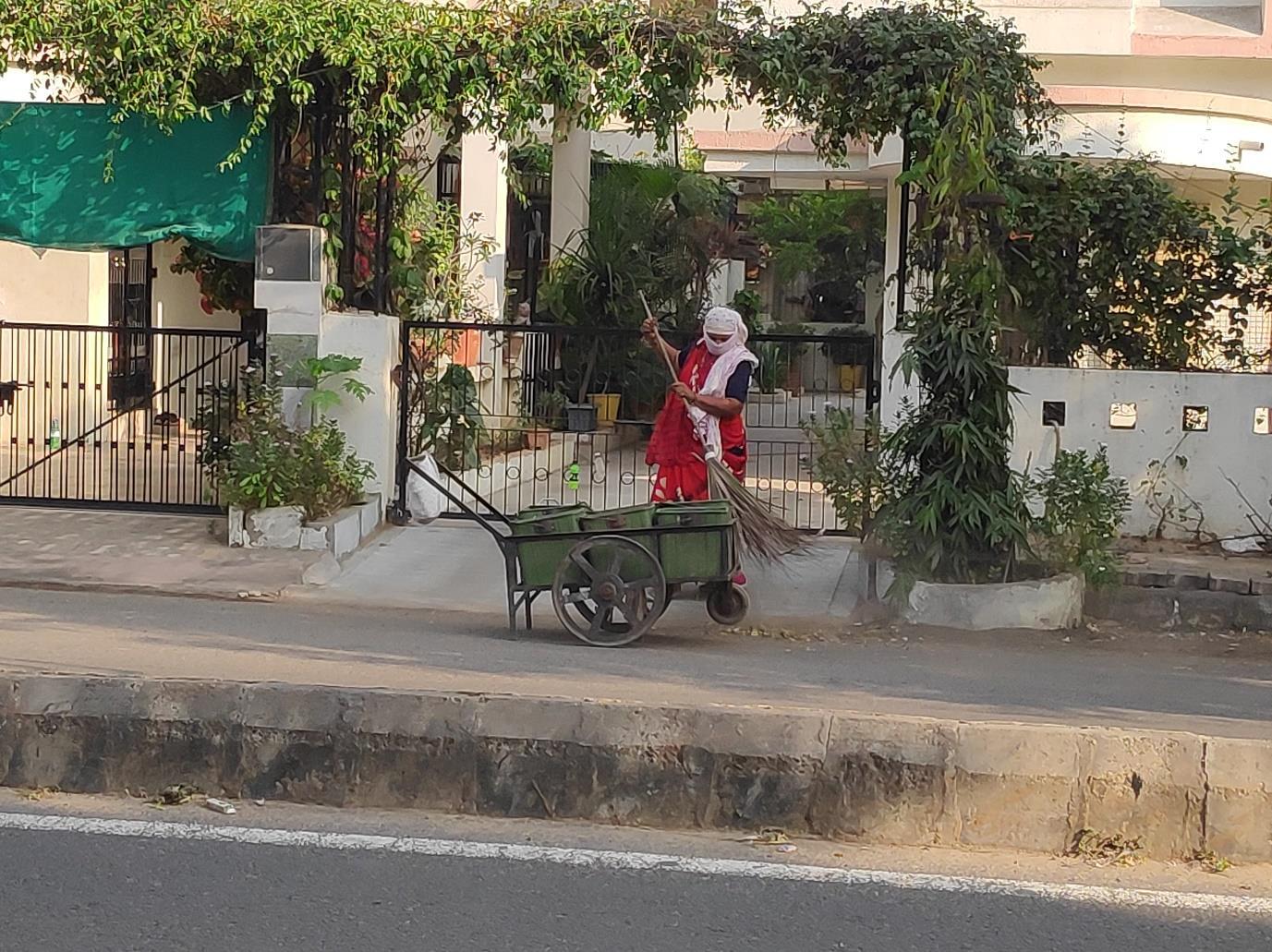Humanizing waste collection within an urban neighbourhood

Goals:
• Taking ownership or responsibility of waste on the street of your own neighbourhood.
• Creating a dialogue between urban residents and street cleaners of their neighbourhood.
• Participatory planning to locate the right position of the large garbage bin in the neighbourhood.
• Fostering experiential learning through understanding the tools available for the rag pickers and cyclic process of waste disposal.
Background:
I walk to work everyday and over the past month of engaging my mind in UEE lectures I have kept a keen eye out for the daily activities that happen along the stretch. Living in a humble bungalow neighbourhood in a dense urban city there are lots of opportunities for interaction of the residents with their adjoining street. However there seems to be a strong disconnect and it is apparent with the fact that people have parked their vehicles along the street edge, garbage piled across the stretch allowing little room for people to engage in social learning.
My audience are urban residents living in this neighbourhood. For this EE activity one would require to interact with the local rag picking community along with the tools they use namely broom, tools
to pick up dry garbage, trolley with smaller compartments of dustbin (refer to the image). For safety information i also brought along gloves and face masks.
Activity Description:
• I went at 8am to the neighbourhood on a Sunday (where residents are generally at home) and the local rag picking community is active.
• I asked them permission to allow me to introduce them to the urban dwellers and educate them with the tools available with them for garbage collection.
• I went door to door to each house and introduce the residents with the local rag pickers by name and showed them all the tools available with them to clean their street.
• Stressed importance of urban sustainability and how public infrastructure like dustbins along the stretch of the street is important to make the job easier for the rag pickers.
Terminology
urban sustainability, urban residents, social learning, public private partnership, participatory planning, placed based education, experiential learning, public infrastructure
Sources
Adams, E.J., Cavill, N. & Sherar, L.B, 2017, Evaluation of the implementation of an intervention to improve the street environment and promote walking for transport in deprived neighbourhoods.
Aafke C L Hofland, Jeroen Devilee, Elise van Kempen, Lea den Broeder, February 2018, Resident participation in neighbourhood audit tools a scoping review.
